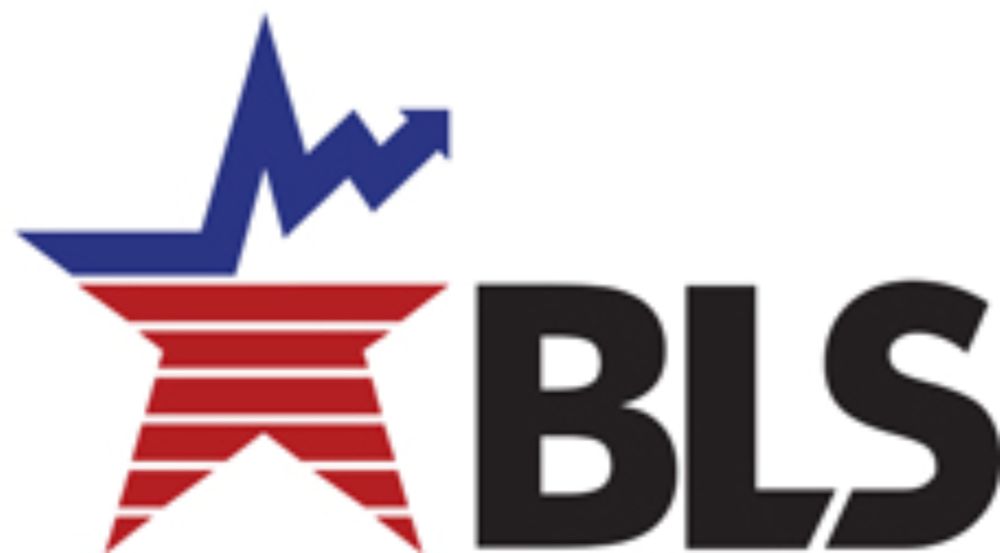A nice piece on algorithmic pricing worth your time.
A question I got frequently when I led BLS was why the agency went into stores and didn’t just collect prices online. My answer, “prices online are often different than in the store, so we do both” often surprised people.
09.12.2025 17:01 — 👍 148 🔁 60 💬 6 📌 1


Quits rate dropped sharply in October, which could be noise, but is certainly consistent with a labor market where workers don't feel much confidence in their ability to find another job.
09.12.2025 15:34 — 👍 16 🔁 1 💬 0 📌 0

The impact of the DOGE cuts showed up in September, but mostly not as "layoffs" but rather voluntary quits and "other separations" (which includes retirements).
09.12.2025 15:31 — 👍 36 🔁 10 💬 2 📌 1

On the other hand, job openings seem to have stabilized at roughly their 2019 levels.
09.12.2025 15:20 — 👍 7 🔁 1 💬 1 📌 0


The layoff rate in October rose to its highest level in more than a year. Layoffs are still low by historical standards, but are gradually edging upward.
09.12.2025 15:20 — 👍 6 🔁 2 💬 1 📌 0

The hires rate ticked up in September, down in October. But the trend seems to be down again after having stabilized somewhat earlier this year. #NumbersDay
09.12.2025 15:20 — 👍 6 🔁 2 💬 1 📌 0

Job Openings and Labor Turnover Summary
- 2025 M10 Results
Today's #JOLTS report gives our first official look at the labor market in October.
Short version: Not that different from August, but some signs of further weakening. #NumbersDay
Data: www.bls.gov/news.release...
09.12.2025 15:11 — 👍 66 🔁 15 💬 2 📌 3
I wondered the same. I imagine they would want to distinguish between the price of the goods themselves and the price of the service of having your groceries picked and delivered. But to the extent prices vary from customer to customer, it seems that would present a real measurement challenge.
09.12.2025 13:56 — 👍 7 🔁 2 💬 1 📌 0

Same Product, Same Store, but on Instacart, Prices Might Differ
Same product. Same store. Same time. But on Instacart, different customers may see different prices.
My story on a fascinating new experiment from @groundwork.bsky.social & @consumerreports.org and how the idea of a single price is breaking down in the digital age:
www.nytimes.com/2025/12/09/b...
09.12.2025 13:48 — 👍 238 🔁 82 💬 11 📌 21
You know what's not a great way to advertise trinkets commemorating my dead dad? A subject line advertising them as "A great gift for my dad."
05.12.2025 15:45 — 👍 23 🔁 0 💬 3 📌 0
Statement from the American Economic Association
The AEA has imposed a lifetime ban on Lawrence H. Summers’ membership and participation in AEA activities. See the full statement here. www.aeaweb.org/news/aea-sta...
02.12.2025 16:01 — 👍 605 🔁 164 💬 15 📌 75
As someone whose writing benefits from excellent professional editing, I think everyone needs an editor. That said, I think Joey does a great job serving his particular audience (which includes those of us whose job it is to boil things down further for a more general audience).
02.12.2025 15:39 — 👍 1 🔁 0 💬 0 📌 0

America is Flying Blind on Immigration
Nobody Knows How Many Immigrant Workers Have Left the US Amidst Trump's Mass Deportations. That's Incredibly Bad.
Excellent piece from the always-excellent @josephpolitano.bsky.social on why no one should be citing Current Population Data on immigration levels, and why it's a problem that we don't have better data on this crucial question. #EconSky
www.apricitas.io/p/america-is...
02.12.2025 15:18 — 👍 44 🔁 15 💬 1 📌 3
This one is about 70% white (mostly King Arthur AP, some KA bread flour). Unusual for me since I usually do much more whole wheat/spelt/rye but one of these loaves is for stuffing.
24.11.2025 19:25 — 👍 0 🔁 0 💬 1 📌 0

Thanksgiving prep underway! #BreadSky
24.11.2025 16:50 — 👍 35 🔁 1 💬 3 📌 0
For the record, there is no data to release -- it wasn't collected because of the shutdown. BLS says it will release the data that it was able to collect (because it didn't come from survey-based sources), but cannot conduct the survey retroactively.
21.11.2025 17:56 — 👍 9 🔁 0 💬 0 📌 1
They'll publish an index value, and a 12-month change. We can then all calculate two-month change, or two-month change at a monthly rate, or whatever seems best.
21.11.2025 17:23 — 👍 0 🔁 1 💬 0 📌 0
Shoutout to everyone who's going to get to spend Thanksgiving fixing their code so it doesn't break when it hits an NA for October.
21.11.2025 17:12 — 👍 34 🔁 7 💬 0 📌 0
Sorry, that was the Morning newsletter, not the Daily.
21.11.2025 17:01 — 👍 0 🔁 0 💬 0 📌 0

A Trump Recession?
We certainly aren't avoiding the term "recession."
Here, for example, is an episode of the "Daily" -- our flagship podcast -- with the headline, "A Trump Recession?"
www.nytimes.com/2025/03/20/b...
Or a video that ran at the top of our homepage: www.nytimes.com/video/us/pol...
21.11.2025 16:56 — 👍 0 🔁 0 💬 2 📌 0
Mainstream economic forecasts were clearly too pessimistic in 2022-23, and our coverage reflected that pessimism. Looking back, I think we did an ok job reflecting the uncertainty and responding to the stronger data, but we certainly weren't perfect, and we should learn from that experience.
21.11.2025 16:41 — 👍 0 🔁 0 💬 1 📌 0
Details here look pretty much as expected. They'll publish October index values for the items that aren't based on survey data (such as auto prices, which come from a third-party vendor). But BLS says it can't collect survey data retroactively. #EconSky
21.11.2025 16:33 — 👍 10 🔁 0 💬 2 📌 0

Revised news release dates following the 2025 lapse in appropriations
Revised news release dates following the 2025 lapse in appropriations
BREAKING: BLS says it will not publish an October CPI. November CPI will be delayed to Dec. 18, meaning too late for the FOMC meeting the previous week. #NumbersDay #EconSky
www.bls.gov/bls/2025-lap...
21.11.2025 16:33 — 👍 45 🔁 17 💬 4 📌 7

Job Gains Disguise Weakness Beyond Service Industries
Our coverage of yesterday's report was similarly nuanced, highlighting the stronger-than-expected job growth but also the rising unemployment rate and the signs of underlying weakness. www.nytimes.com/2025/11/20/b...
21.11.2025 15:50 — 👍 0 🔁 0 💬 1 📌 0

Against the Odds, the U.S. Economy Chugs Along, as Fears Linger (Published 2023)
In June 2023, 209k was, literally, a cooldown -- from 300k the month before. I'd argue our story painted a balanced picture, noting both the slowdown and the resilience.
www.nytimes.com/2023/07/07/b...
21.11.2025 15:50 — 👍 0 🔁 0 💬 1 📌 0
If only.
20.11.2025 15:52 — 👍 5 🔁 0 💬 1 📌 0
119k is the best number since April and more than 2x forecasts. And it comes at a time when economists think job growth has to slow because of the smaller labor force.
We're being sure to emphasize the increase in unemployment as well. But the payroll figure itself was solid in the current context.
20.11.2025 15:22 — 👍 4 🔁 0 💬 2 📌 0


First, ADP only measures private. So it's -32k vs +97k.
Second, ADP is large, but it isn't fully representative of the U.S. economy. They try to account for that through weighting, but that only gets you so far.
Third, the estimates differ month-to-month, but they line up pretty well over time.
20.11.2025 15:07 — 👍 4 🔁 0 💬 1 📌 0
Political science professor. Has thoughts about that thing someone said.
Book: Backlash Presidents: From Transformative to Reactionary Leaders in American History
https://tinyurl.com/te8cmzmr
https://goodpoliticsbadpolitics.substack.com/
Mayor-Elect of New York City
Former reporter and public relations professional. MA in journalism. Human rights, justice and fairness. Missing what I thought our country used to stand for
Economist at USC Sol Price School of Public Policy. Nonprofit economics, public economics, economic history. #EconSky
Site: http://www.nicolasduquette.com
Tax guy. Here for news and discussions regarding taxes and current events.
I love the Economy and you can too
President of the Fordham Institute, executive editor of Education Next, proud father.
Social welfare scholar, recovering neoliberalist, mom, enthusiastic punctuator!!!!
👎🏻: poverty, late-stage racial capitalism
👍🏻: admin data, social workers in policy, work-life balance
UW SSW but sky-eets R mine
Pic1: ww on zoom
Pic2: the mess offscreen
She/her. Development economist. Gender, health, and nutrition. Currently at CGD. WB Research, Illinois, and Macalester alumna. Forever a Delhi girl. #econsky
Associate Professor of Economics @imperialcollegeldn.bsky.social, also @cepr.org, @cep-lse.bsky.social and @cesifo.org. Research on innovation, productivity, trade, environment 🇳🇴🇬🇧🌍
Development economist studying political economy of aid and institutions | social norms and gender | 🇧🇩
Macroeconomist interested in labor markets, development and inequality. Assistant Professor at Bates College. Econ Ph.D. from Ohio State University.
ap @buwheelock.bsky.social | k-12 ed policy and cat pictures | opinions own | they/them
website: www.jo-r-king.com
Teaching Professor Emerita, Economics, UC Berkeley. 🏳️🌈 CalWBB & WNBA fan.
Economist @ Minneapolis Fed's Opportunity & Inclusive Growth Institute. There's a graph for that. Views are my own. (she/her) https://albrightalex.com/
econ vibes studies & all things monetary; intensely Viennese; auntie in love.
(she/her)
https://sites.google.com/view/lea-steininger/
Assistant Professor at the Faculty of Economic Sciences, University of Warsaw |
Education and labour market inequalities
Inequality/Mobility. Researcher @NBER.org.
3rd Year Econ PhD, The Graduate Center.
2nd Lt., U.S. National Guard.
Former Congressional Staff.
Political correspondent @zeteo.com
Any tips or info you’d like to share?
Signal premthakker.35
Prem@zeteonews.com
https://linktr.ee/premthakker
















